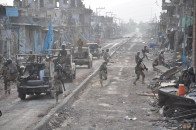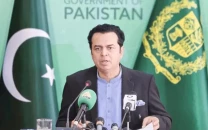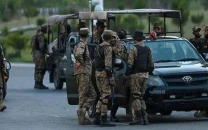WHO desperately seeking funds for health facilities
Overcrowding, inadequate hygiene and nutrition, increasing vulnerability of victims.

Funds for the World Health Organisation’s projects in flood-affected areas of Sindh are severely lacking, with only 9% of the health sector’s needs being accounted for through donations, according to the UN body’s emergency and humanitarian assistance coordinator.
“As of today, Norway, the United States, United Kingdom and Spain are the only donor countries which have pledged funds in support of the World Health Organisation (WHO) to assist millions of flood-affected Pakistanis,” Dr Jorge Martinez said.
“WHO is already working side by side with the Sindh provincial and district health authorities to comprehensively address health problems, but more funds are urgently needed in order to save precious human lives,” added Dr Guido Sabatinelli, the WHO representative in Pakistan, while speaking to the provincial health secretary and other senior officers of the health department.
The focus of the WHO Emergency and Humanitarian Assistance (EHA) team includes the provision of essential primary health care and health services, mitigation of communicable disease outbreaks through intensive surveillance and early response to disease threats, environmental health interventions including water quality analysis and treatment with priority given to schools and health institutions and the treatment of acute malnutrition. WHO communicable disease epidemiologist, Dr Rana Kakar, said that “overcrowding, inadequate hygiene and poor nutrition increase the vulnerability of the affected population.” He added that the situation was worsening with every passing day, so that the risk of an outbreak of waterborne diseases was dangerously high.
Surveillance teams have already identified 57 outbreaks of diarrhoea. In addition, more than 96% of the 294 water sources tested by WHO environmental health team were found to be contaminated. While 805,264 patient consultations have been reported, serious gaps exist in nutrition and immunisation as well as maternal, newborn and child health coverage.
The percentage of contaminated water sources is not the only worrying figure, however. Only 32% of health facilities in flood-affected districts have stocks of medicines, vaccines, equipments and other consumables that will last more than one week. While approximately 450,000 people’s needs are being covered by the WHO, the requirements of the population are far greater.
Published in The Express Tribune, October 9th, 2011.



















COMMENTS
Comments are moderated and generally will be posted if they are on-topic and not abusive.
For more information, please see our Comments FAQ